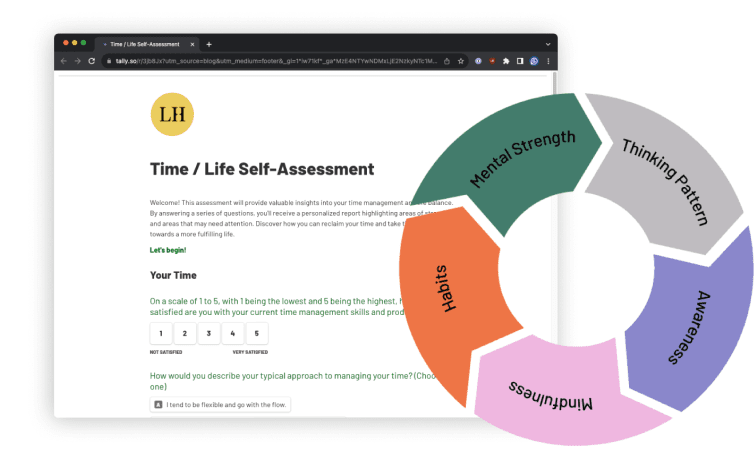When it comes to diets there is so much conflicting information out there, it’s no wonder most people are so confused on what to eat to be healthy and what to eat to lose weight. It can be so overwhelming!
Intermittent fasting is all about when you eat. It is an eating plan that alternates between periods of fasting and eating on a regular schedule. Intermittent fasting is a great tool to manage your body weight and studies show it can help fight inflammation and be used to prevent or possibly reverse some forms of disease.
Is Intermittent Fasting Right for You?
Intermittent fasting or often referred to as (IF) for short is a very popular trend in health and fitness nowadays. People are using this technique to lose weight, improve their health and simplify their lives.
Obesity is a common and costly disease in today’s world. According to a CDC research, the obesity prevalence in the United States increased from 30.5% to 41.9% between 1999 and 2000. During the same period, the prevalence of extreme obesity rose from 4.7% to 9.2%.[1]
The major increase in obesity has led so many to look for more effective and sustainable ways to lose weight.
Even though Fasting has been a practice throughout human evolution, it has really gained popularity lately. The term ‘breakfast’ gets its name from breaking the fast, which is done daily.
Fasting has been used therapeutically for centuries, according to Encyclopedia Britannica:[2]
“Greek physician Hippocrates recommended abstinence from food or drink for patients who exhibited certain symptoms of illness.”
Fasting is also often done for religious or spiritual reasons, including in Islam, Christianity, Judaism, Hinduism and Buddhism.
When you fast, several things happen in your body such as;
- Your body alters hormone levels to make stored body fat more accessible.
- Your cells also initiate an important repair process known as Autophagy which starts at 16-18 hours in, which means “self-eating” and is the body’s way of clearing damaged, unnecessary cells in order to make newer, healthier cells.
- Your levels of growth hormone increase tremendously at 13 hours fasted which aids in fat loss and muscle gain.
- Increases Insulin sensitivity and levels of insulin drop dramatically. Lower insulin levels make it easier for stored body fat to be burned for fuel.
- There are also changes in the function of genes related to longevity and protection against disease.
When you don’t consume food or calories, the body looks for other ways to generate energy, such as drawing on glucose, ie. sugar stores. Once the glucose is significantly used up, the body’s metabolism changes, and the body begins to burn fatty acids from stored fat for energy resulting in a reduction of fat mass.
Studies have shown that implementing fasting patterns can lead to increased life span, enhanced defenses against oxidative and metabolic stresses, as well as a decrease in cardiovascular risk in both obese and non-obese individuals according to a Pubmed article.[3]
Is Fasting for Weight Loss Effective?
Weight loss is one of the main reasons people turn to intermittent fasting. Eating fewer meals while fasting can lead to a reduction in caloric intake and changes in hormone levels that can lead to weight loss.
Intermittent fasting takes the emphasis off what you eat and focuses more on when. For some dieters it is a relief to be able to control the timing rather than sticking to traditional low fat or low carbohydrate diet regimes.
Methods of Intermittent Fasting
5:2 Method
It is where you eat a normal eating pattern for 5 days of the week and eat a very low calorie pattern for 2 days of the week which is referred to as the fasting days. Women should aim for about 500 calories on fasting days, while men should have about 600.
How Balanced is Your Life?
Assess how balanced your life is with our Time/Life Self-Assessment and get a customized report for free.
You will find out your time management strengths, uncover hidden opportunities, and shape your life on your terms.

It is a basic concept that is straightforward to follow with no rigorous calorie counting five days a week. This method appears to be beneficial for weight loss, but it is still necessary to make good choices on non-fasting days to enhance weight loss.
Alternate-day fasting
It is eating a normal diet one day and either completely fasting or having one small meal (less than 500 calories) the next day. This can also be referred to as a 4:3 diet. There is some evidence that shows this approach will lead to weight loss as well as a number of other benefits.
The 16:8 Diet
This method of intermittent fasting involves fasting every day for 16 hours straight and restricting your daily eating window to just eight hours.
For most people, this schedule means not eating anything after dinner and pushing your breakfast back a couple of hours. You might eat between, say, 10am and 6pm. This is the most popular and most user friendly of the fasting methods and one I use with my clients.
OMAD (One meal a day)
This diet is a little different from the rest, with the majority of the eating happening all in one meal. In this pattern you fast for 23 hours straight and then consume one large meal in a 60-minute eating window.
The OMAD diet, like other intermittent fasting diets, may help people lose weight. However, because it only allows one meal each day, it can make achieving nutrient needs challenging and may have negative health consequences. It could also lead to weight loss plateaus if utilized for longer periods of time.
Crescendo Method
This Fasting pattern consists of fasting for 12–16 hours for two to three days a week and is a more gentle fasting plan. Fasting days should be nonconsecutive for example, Monday, Wednesday and Friday.
Crescendo fasting is often referred to as the best fasting method for women because it works well with women’s delicate hormones instead of against them.
Eat-stop-eat
Also called the 24-hour protocol is a 24-hour full fast once or twice a week (maximum of two times a week for women) where you abstain from eating any food for a full 24hrs.
Which Intermittent Fasting Schedule Is Best For Weight Loss?
The short answer is the one that’s easiest for you to follow. We are all unique and what works for one person may not work for another.
In general, women should adopt a more flexible approach to fasting than men.
Women’s bodies are much more sensitive to the signals of starvation, so fasting for too long could affect women.
Each method has its own set of benefits and drawbacks. Choose a diet approach that works well with all of your lifestyle factors, such as your work schedule, family dynamic, living situation, travel commitments, and so on.
What to Eat While Intermittent Fasting?
While fasting is more focused on meal timing it is still very important to focus on good quality nutritious foods as well.
Choosing nutritious whole foods and beverages during your eating windows will help ensure your results.
Opt for low glycemic fruits such as berries, leafy green veggies such as spinach and kale and high quality protein sources such as grass fed beef, poultry or wild caught fish.
Keeping your starchy carbohydrate content low will also keep your insulin levels stable and reduce hunger caused by insulin spikes which will make fasting so much easier.
Is It Better to Fast for 12 Hours or 16 Hours?
While studies show that a minimum of a 12-hour fast is enough to help you get some of the benefits of fasting, the 16/8 intermittent fasting method is by far the most popular.
The 12-hour fast is ideal for beginners because most individuals sleep for 7-9 hours per night, therefore going 12 hours without eating involves little effort or stress. All you need to do is postpone your breakfast for a few hours.
The primary difference between the 12 hour and 16 hour fasts is that the 16 hour fast allows your body to enter the autophagy phase, where it begins to repair itself at the cellular level.
Conclusion
In the search for long-term weight loss, there is no one-size-fits-all method, but intermittent fasting may be an effective nutritional plan worth considering for those looking for an alternative to the move more, eat less paradigm.
The simplest approach to begin intermittent fasting is with a 12-hour fast and gradually increasing your fasting time to 16 hours as you acclimatize.
Remember that it is critical to structure your eating windows around lean proteins, healthy fats, vegetables and fruits, and whole grain carbohydrates to ensure you get the appropriate nutrients to prevent deficiencies and disease.
